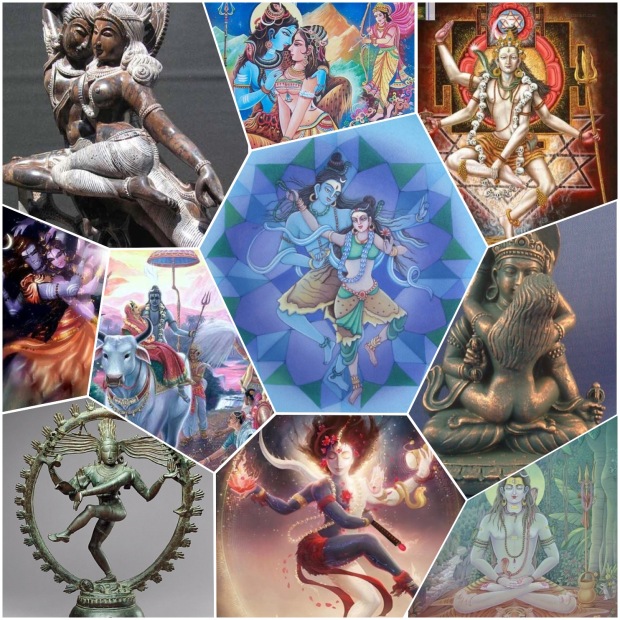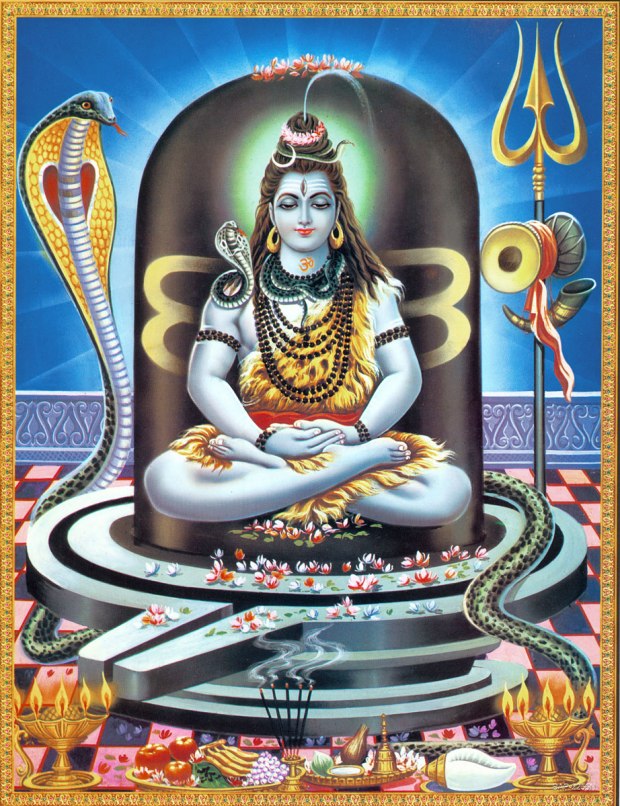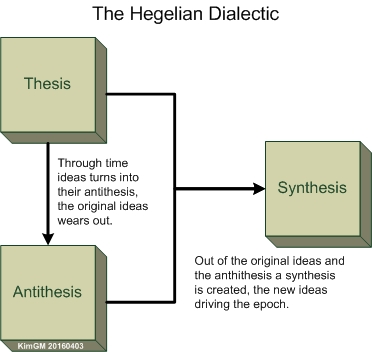
The Earth evolution started within the existing universe, with center in the sun, and the planet Earth was constructed as a crucible where the seed for the new universe was placed.
Shiva, the Luciferic powers, were the creators of the old universe; together with Brahma and Vishnu they were the old universe. See also The Origin of Lucifer – Shiva.
In the crucible the new began to take form, Krishna, the transformed Lucifer, became stronger and stronger and the old Lucifer, Shiva became smaller and smaller, through the development of man.
When the new universe was developed far enough, the transformed gods died in the old universe, and they resurrected/incarnated into the new universe, from being outside the physical body of man, they became soul and spirit in man, what we see outside is the dead body of the gods, the new universe is inside man.
From Wikipedia:
At the highest level, Shiva is regarded as limitless, transcendent, unchanging and formless. Shiva also has many benevolent and fearsome forms.
In benevolent aspects, he is depicted as an omniscient Yogi who lives an ascetic life on Mount Kailash, as well as a householder with wife Parvati and his two children, Ganesha and Kartikeya, and in fierce aspects, he is often depicted slaying demons. Shiva is also regarded as the patron god of yoga and arts.
The main iconographical attributes of Shiva are the third eye on his forehead, the snake Vasuki around his neck, the adorning crescent moon, the holy river Ganga flowing from his matted hair, the trishula as his weapon and the damaru as his musical instrument. Shiva is usually worshiped in the aniconic form of Lingam.
According to Wendy Doniger, the Puranic Shiva is a continuation of the Vedic Indra. Doniger gives several reasons for her hypothesis. Both are associated with mountains, rivers, male fertility, fierceness, fearlessness, warfare, transgression of established mores, the Aum sound, the Supreme Self. In the Rig Veda the term śiva is used to refer to Indra. Indra, like Shiva, is likened to a bull.
Nandī, also known as “Nandin”, is the name of the bull that serves as Shiva’s mount. Shiva’s association with cattle is reflected in his name Paśupati, or Pashupati, translated by Sharma as “lord of cattle” and by Kramrisch as “lord of animals”, who notes that it is particularly used as an epithet of Rudra. “Rishabha” or the bull represents Dharma Devata (lord). Lord Siva rides on the bull. This denotes that Lord Siva is the protector of Dharma, is an embodiment of Dharma or righteousness.
All this is happening in the period of the bull, the symbol connected with both Lucifer and Shiva.
Shiva and Brahma

Shiva
Brahma creates order in the world through rules, are the world, where Shiva brings the ideas for the creation, but to create new, the old rules of Brahma must be destroyed, so Shiva destroy to make room for new ideas.
Shiva ist kein Gott der Ruhe und Kontemplation, sondern der Meister der Ekstase.
Oft wird er als tanzender Gott dargestellt. Sein Tanz symbolisiert den Kreislauf der Zeiten und wenn er sich zur ekstatischen Raserei steigert, offenbart sich Shiva als Zerstörer, garantiert aber gerade dadurch, dass die Schöpfung nicht im fertig geschaffenen Sein erstickt, sondern dass das Geschaffene auch immer wieder aufgelöst wird und so den Raum für einen neuen schöpferischen Einschlag frei gibt.
So erweist er sich zuletzt als der gütige Freund, der den Schöpfungsvorgang immer wieder neu belebt und es ist die feste Überzeugung der Shivaiten, dass sein Tanz die Welt erhält.
From AnthroWiki
Through time these ideas are implemented as rules by Brahma, and then they become a straightjacket for evolution through decay. We know also Brahma under the name of Jahve or Sophia, or in its negative aspect as Ahriman.
Das Göttliche teilt sich für den Brahmanismus in drei Aspekte, in Brahma, Vishnu und Shiva.
Brahma nennt man mit Recht den großen Baumeister der Welt, der Ordnung und Harmonie in der Welt bewirkt. Vishnu bezeichnet man als eine Art Erlöser, Befreier, Erwecker des schlummernden Lebens, und Shiva ist derjenige, der das von Vishnu erweckte schlummernde Leben segnet und emporhebt zu den Höhen, zu denen man es überhaupt erheben kann. See Vishnu.
From AnthroWiki
Shiva Lingam
The Shiva lingam describes the world, Shiva [Yang or Lucifer] is the etheric world, Brahma [Yin or Ahriman] is the physical world and Vishnu [TAO of Son of God] is man, in the middle between the two.

It’s also a representation of Axis Mundi, the world pillar or world tree.
The three powers in Hegelian view
If we see it from a Hegelian view, Shiva is the Thesis, Brahma is the Antithesis and Vishnu is the Synthesis:

Shakti
Shakti represents the physical world, and Shiva manifest through her, he needs the physical world to create.
 Shiva forms a Tantric couple with Shakti, the embodiment of energy, dynamism, and the motivating force behind all action and existence in the material universe.
Shiva forms a Tantric couple with Shakti, the embodiment of energy, dynamism, and the motivating force behind all action and existence in the material universe.
Shiva is her transcendent masculine aspect of Shakti, providing the divine ground of all being.
Shakti manifests in several female deities. Sati and Parvati are the main consorts of Shiva. She is also referred to as Uma, Durga (Parvati,) Kali and Chandika.
Kali is the manifestation of Shakti in her dreadful aspect. The name Kali comes from kāla, which means black, time, death, lord of death, Shiva. Since Shiva is called Kāla, the eternal time, Kālī, his consort, also means “Time” or “Death” (as in “time has come”). Various Shakta Hindu cosmologies, as well as Shākta Tantric beliefs, worship her as the ultimate reality or Brahman. She is also revered as Bhavatārini (literally “redeemer of the universe”). Kālī is represented as the consort of Lord Shiva, on whose body she is often seen standing or dancing.
Shiva is the masculine force, the power of peace, while Shakti translates to power, and is considered as the feminine force. In the Vaishnava tradition, these realities are portrayed as Vishnu and Laxmi, or Radha and Krishna. These are differences in formulation rather than a fundamental difference in the principles.
Both Shiva and Shakti have various forms. Shiva has forms like Yogi Raj (the common image of Himself meditating in the Himalayas), Rudra (a wrathful form) and Nataraj (Shiva’s dance are the Lasya – the gentle form of dance, associated with the creation of the world, and the Tandava – the violent and dangerous dance, associated with the destruction of weary world views – weary perspectives and lifestyles).
The female forms are all aspects of the physical world.
The five mantras
Shiva is defined as the etheric world, and consists of five sub planes, where the physical is the fifth and lowest:
Five is a sacred number for Shiva. One of his most important mantras has five syllables (namaḥ śivāya).
Shiva’s body is said to consist of five mantras, called the pañcabrahmans. As forms of God, each of these have their own names and distinct iconography:
- Sadyojāta
- Vāmadeva
- Aghora
- Tatpuruṣa
- Īsāna
These are represented as the five faces of Shiva and are associated with the five elements, the five senses, the five organs of perception, and the five organs of action.
Shiva and Krishna
Shiva is the etheric world as it was at the beginning of the Earth development, the untransformed Lucifer, where Krishna is the transformed etheric world, the transformed Lucifer.
Shiva is the ideas behind materialism, his followers are physically rich, where Krishna have the inner richness, and his followers are poor in materialistic goods, Krishna introduces Love and Joy into humanity, we shouldn’t work in blood, sweat and tears any longer.
Our etheric body consists of two kinds, the karmic beings that are not yet transformed, our karma, and the beings that we have transformed through understanding, the first is Shiva the last ist Krishna, the first is materialistic the second is spiritual.
When we have transformed most of our karma we can create an etheric body fully out of our own transformed ether, out etheric body is part of Krishna, who are the sum of the humanity’s etheric bodies.
See also Krishna and the Holy Spirit and Krishna as Teacher of Love.

![kimgraaemunch [] GMail () com](https://kimgraaemunch.files.wordpress.com/2017/02/kimgraaemunch-g.png?w=210)













#1 by Nithya on April 29, 2018 - 5:10 pm
I would like to point out the part in the article where it is mentioned that ‘Shiva’s followers are physically rich and Krishna’s followers are materialistically poor’. Anyone who has grown up in India will tell you that things are exactly the opposite. The most famous Vishnu (Krishna) temple in Tirupati is the most rich temple in India. You will find amazing delicacies, lots of money pouring in most Vishnu temples but the Shiva temples will be much more modest and simple in comparison. Many ancient Shiva temples don’t have funds for regular maintenance and are in poor plight. Krishna was about living life fully in all exuberance ( untouched and unattached) and Shiva is about giving up all pleasures and hence he is only in his loin cloth.
It is just 2 different ways of going about life in my perspective
A lot of how you have associated and made relations of Hindu mythology and anthroposophy in many blog posts will need revisit and review after a better understanding. I appreciate the huge effort and congratulate on a wonderful start.
.
LikeLike
#2 by Kim Graae Munch on April 30, 2018 - 8:35 pm
I didn’t talk about the temples, I talked about the persons. A rich Temple tells that the believers are willing to pay, it don’t tell that they have many money. I have the information from an Indian source, but can’t remember from where, but if I find the source I will put it in here.
LikeLike